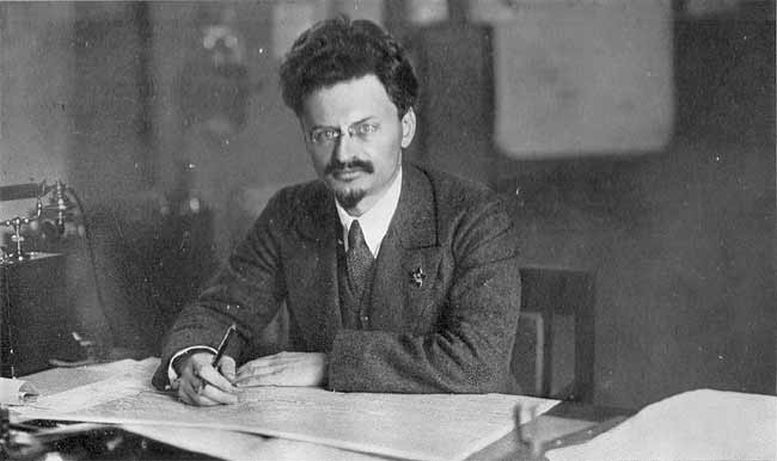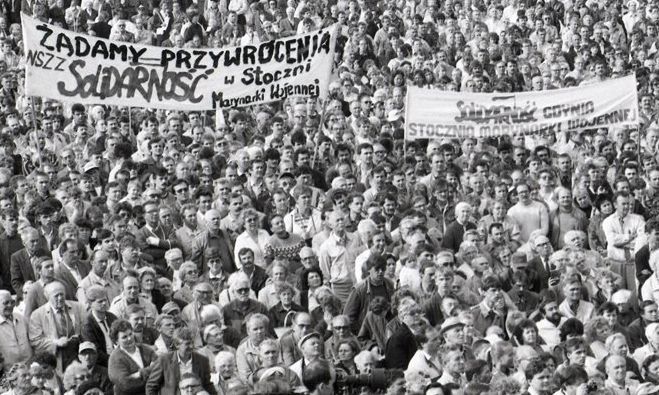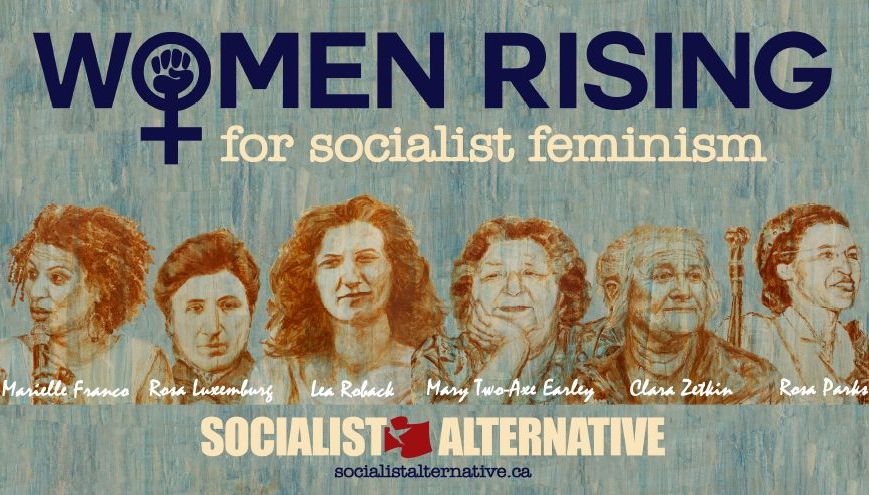Connor Rosoman is a member of Socialist Alternative (England, Wales & Scotland).
The Transitional Program and Method
Report from a session at ISA’s International Cadre School, where hundreds of socialists from around the world discussed key questions for socialists and the working class as a whole and our task in building a movement for a way out of capitalist crisis.
The discussion was introduced in two parts. Leslie Kemp from Socialist Alternative in Canada explained the history and the roots of the transitional program. Laid out in Leon Trotsky’s ‘The Death Agony of Capitalism and The Tasks of the Fourth International’, and adopted by the Fourth International in 1938, the transitional programme acts as a bridge for socialists in a non-revolutionary period between the current, everyday struggles of working-class people and the need for socialist change.
This approach is an antidote to the failures of both reformism and ultra-left sectarianism in the socialist movement. At the time, these mistaken approaches laid the ground for big defeats of the workers movement including the rise of fascism in Europe.
Reformism, which aims to change society bit-by-bit, focuses on a minimum programme of immediate reforms. When (or if) the “maximum” program of socialism is mentioned, it remains an ideal disconnected from the work of the organisation in the here and now, merely set aside for a later date or for radical sound.
On the other hand, ultra-left socialists refuse to engage with the current struggles and consciousness of working-class people. Instead, they consign themselves to slogans like “one solution: revolution,” which provide nothing for those moving into struggle.
The transitional method stands in contrast to both of these approaches. It aims to build a bridge between consciousness as it is right now, and the need for socialism. This is done through a series of increasingly bold demands that point toward the inevitable conclusion of the need for a socialist transformation of society.
But as Leslie explained, its roots go back much further. It was informed by decades of prior struggle. Even in 1848, Marx and Engels included an immediate programme of demands as part of the Communist Manifesto.
This was also true of the Bolshevik Party through the course of the Russian Revolution. The rich experience of the first successful worker’s revolution continues to be of enormous value to socialists. The Bolsheviks’ success in building a movement that could overthrow capitalism was rooted in their skillful use of slogans that mobilised the masses of workers and peasants, and that exposed the capitalist system and its representatives as incapable of providing a way out of war, poverty and oppression. This meant a flexible approach, raising demands at the right time and rooted in an understanding of the political situation and mood of the working class and oppressed peoples.
A living program
Chris Gray, from Socialist Alternative in the US, explained how we use this method to inform our work today. The transitional program is a living document, not a fixed dogma. It is based on the current struggles of working-class people, as well as the different experience and different levels of organisation among different sections of the working class.
When Russian revolutionary, Leon Trotsky met leaders of the 4th international (an international socialist organisation founded by Trotsky and other Bolsheviks opposed to the Stalinist takeover in the USSR) in Mexico, he described the programme like notes in a piece of music. It is made up of individual demands (the notes) but together they function as a whole fighting program. None of these demands are raised in isolation; they are all connected to a wider programme.
Some such notes might include immediate slogans such as “fora Bolsonaro” as we use in Brazil or “drive out Johnson” in England, Wales and Scotland. It can also include transitional demands for nationalisation of the banks under democratic workers’ control and management, and of course for socialist change itself.
This often means starting with the demands raised in the movement, and following this up with the question of “how do we win?”. This distinguishes us from other currents on the left. For example, when fast food workers demanded $15/hr as part of the 2014 15Now movement in the US. Unlike some groups who saw it as more revolutionary to call for a $16 min wage, we proposed a method of struggle to actually win $15/hr and helped the movement achieve a concrete victory. Out of this victory came a basis for further workers struggles, and a national campaign for a $15 minimum wage which has been won in cities across the US.
Democratic demands
Another “note” in the transitional program is that of democratic demands. For our organisation in China, Hong Kong and Taiwan, the fight for democratic rights, politically and economically, are a crucial part of struggle, and as a result, absolutely essential for our programme.
In Brazil, ISA members may have to fight to defend the election results in October, where Bolsonaro is unlikely to accept an electoral defeat.
As capitalism falls further into crisis, political repression, attacks on democratic rights and even the threat of coups become more likely as the capitalist class tries to shore up its rule.
It is a system rigged against working people and repression is part and parcel of such a system. As such, even where we defend an electoral victory against, far right politicians like Bolsonaro, we have no faith in the structures of capitalism to defend such a result. But by linking the need for democratic rights with working class struggle, the need to organise in the streets and in the workplace to fight the far right for instance, and the inability of capitalism to truly defend our rights, we can draw the connection to the need for socialist change, and for what kind of movement is necessary to carry it out.
But we know that even basic democratic demands can become a spark for revolutionary upheavals, such as in the so-called ‘Arab Spring’ movements of 2011. For this reason, such demands are essential to our programme.
Transitional slogans
Many attendees discussed the need for immediate slogans that point a clear way forward for the next steps in struggle.
Every victory our class wins highlights the limits of such victories within the current system. To win a real pay raise against the cost-of-living crisis will require a determined struggle against the bosses, who insist they can’t afford it. We need to be prepared to challenge them on this, demanding they open their books to show where the money is, and raise the question of nationalisation if private companies really can’t guarantee decent wages.
The experience of struggle not only increases workers’ understanding of the limits of this system, it also increases their confidence and willingness to fight, and raises the sights of what is possible. Reforms under this system will be resisted, rolled back at the soonest opportunity, and never fully won. As socialists we strive to highlight this in the course of struggle, as well as what it takes to counter so that we sow the seeds for the next victory at each stage.
As Eric Byl from Belgium explained, an immediate demand to “tax the rich,” which we have raised on many occasions, isn’t counterposed to expropriating the rich but in fact highlights the importance of the latter. For us, it is a way to have a first step toward being able to explain that they will try to avoid the tax, that we need nationalisation etc. At a certain stage, the demand to tax the rich may give way to one for nationalisation. Sometimes an immediate demand can become a transitional one, and vice versa.
Such was the case when the Bolsheviks raised the far-reaching slogan of “all power to the Soviets!” in 1917. A year prior, this would have been an abstract idea, but by October 1917 it was a fighting next step for the mass of workers and peasants to chart a way out of the crisis of war and poverty.
Two key aspects to understanding what demands to raise and when, were explained by Rob Rooke from the US, who mentioned the importance of starting from the objective situation in the world (i.e. the wider economic and political context) and having an emphasis on understanding the molecular development of consciousness. For Marxists, understanding the wider objective situation, as well as the precise stage of development in workers’ consciousness is crucial to putting forward the right demands at the right time.
One example of the transitional approach in action was given by Leo from the US, where we have exposed the Democrats’ role in standing in the way of struggle to defend abortion rights using certain key demands. We have called on the Democrats to codify Roe v Wade, which they refuse to do because they are not prepared to challenge the capitalist political establishment or build a movement to support such a move. Instead, we need to build a mass, independent movement that is prepared to break with the democrats and fight for our demands.
Likewise, Zahra from Socialist Alternative in England, Wales and Scotland explained how our slogan for an “independent socialist Scotland” has been crucial in countering the Scottish National Party’s stage-ist “independence first” approach, where any idea of fighting for concrete improvements in workers’ lives is relegated to an undefined point in the future.
However, as was mentioned by Sara Moayeri from Austria, it is not enough that we have only the perfect programme on paper. We need to build an organisation that can use that program, that can understand how consciousness develops through struggle, and how to channel it in a socialist direction. That is crucial to building a revolutionary movement with the bold socialist leadership necessary to change society.
A guide to struggle
The discussion was summed up by Bart from Belgium. He explained the importance of a transitional approach in the current period. Despite an upsurge in workers’ struggle and socialist ideas in recent years, the working class is still dealing with the effects of the collapse of Stalinism, the rightward lurch of former workers’ parties and historically low levels of trade union membership in many countries.
As a result, the bridge between current consciousness and socialism can be long — it needs patience as workers’ move along that bridge step by step.
At the same time, there is the potential for big jumps in consciousness and organisation.
Mass campaigns can spring up quickly and new left political formations can rapidly emerge and come close to power. The question of strategy becomes key in these moments. For International Socialist Alternative, the transitional program is a crucial tool to intervene in these struggles and build a revolutionary organisation as part of them.




